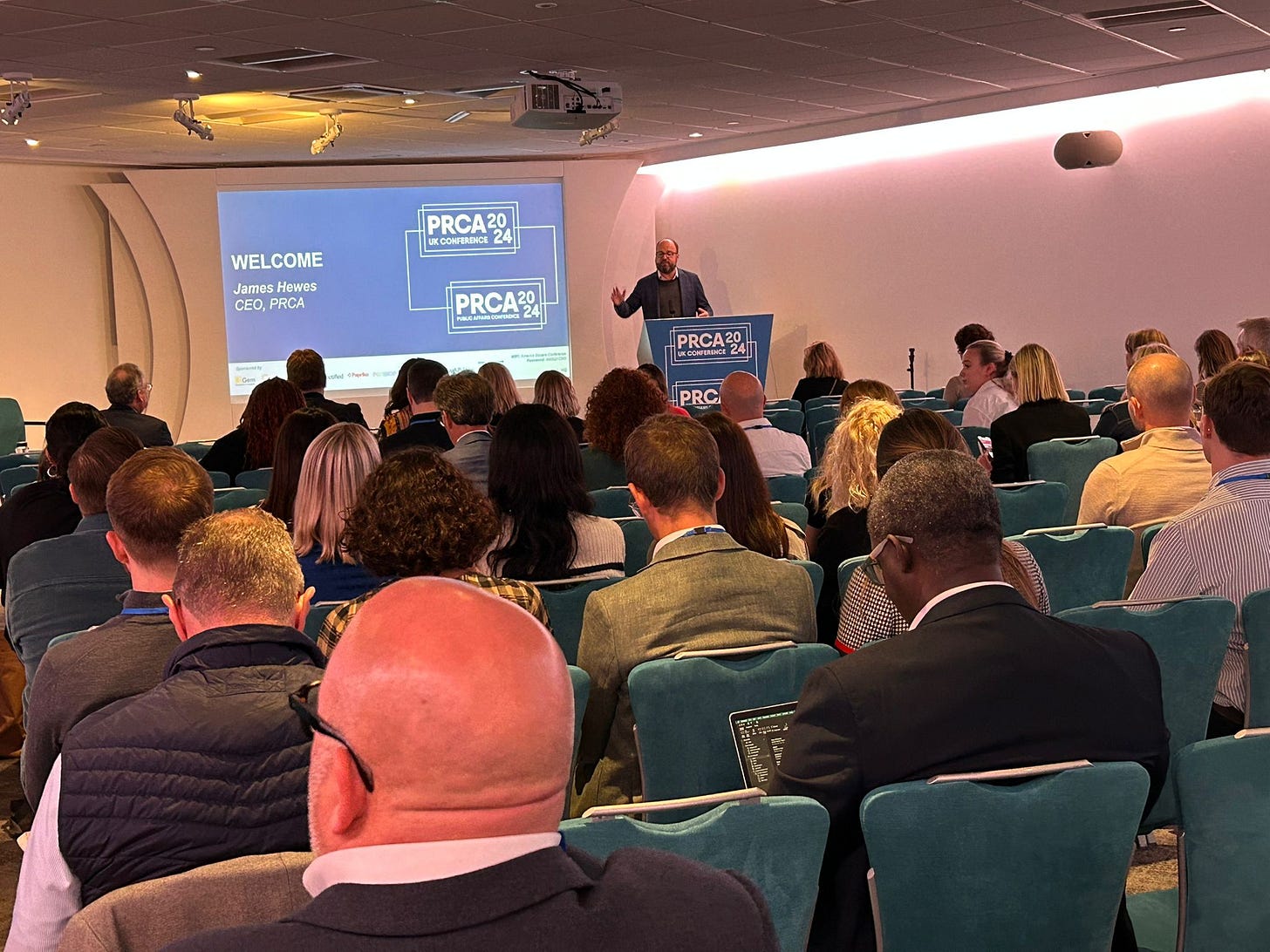Content mixology from the PRCA Conference
Lessons in events content curation
It’s just gone mid-day at the first-ever combined event featuring the PRCA UK Conference and the Public Affairs Conference. The collaboration has already seen half a day filled with insight and rich content. Right now, however, silence has descended upon Ludgate Suite at the Cavendish Conference Centre in the heart of London, with delegates trooping off to the Cornhill Suite to network and chew over lunch and the content they’ve already consumed today.
There’s a lot to digest. Today’s event is a slick gig, run over two stages in a venue where the historic Roman London Wall runs through the venue, providing a memorable backdrop. Stage 1 covers Public Relations (PR) and Stage 2 Public Affairs (PA). This is the first time speakers from within and beyond the PR and PA landscapes are engaging in the most critical topics shaping this industry today. There’s little scope for naval gazing, with topical subject matter like “What’s next for the Conservatives?” and “Beyond Westminster: Life in the devolved nations” intertwining with issues such as “Responsible Communications: How positive engagement aids teen mental health” and “Culture wars: Mastering crisis communication in a polarised world”.
The afternoon slot will see deep dives into AI with “AI and Ethics in Communication” and “People and Algorithms: Storytelling, Engagement and Attention in the AI Age”. Over at the Public Affairs stage, my colleague Adri Kotze had the opportunity to listen to author, podcaster, and former editor-in-chief of Cosmopolitan and Red magazines, Sam Baker, who kicked off something of a menopause revolution with her The Shift podcast. Topic: “Personal Power: Why authenticity is storytelling and community-building gold”. This afternoon’s highlights will include a panel discussion on harnessing the talent and power of multi-generational teams and the state of PR leadership.
Getting the content mix spot on for events like these is not as easy as it may seem. Cobus Heyl, curator and “editor in chief” of the content lineup for today, once described conference content curation as akin to planning a newspaper edition, television or radio news bulletin, or newsletter - in other words, selecting only the best within time and space constraints.
As Cobus puts it: “No editor worth their salt can successfully curate their content mix without a sound knowledge and understanding of the communities they serve.” Successful editors and publishers track their audiences’ interests and demographics and tailor the content to reflect their concerns, events, and relevant issues whether politics, crime, sports, or community events. Emotional proximity is the crux of a successful media product that is treasured by its consumers.
In a digital age of media abundance with no limits on how much and often you can publish, it's perhaps helpful to look at an older medium where space and frequency of publishing restrictions are a hard reality. Let’s take print as an example, although the same analogy would work with television and radio with their strict time limits or newsletters and social media with their word count limits. Print, as any newspaper or magazine hack of old will tell you, demands constant curation decisions on deadline. Editors need knowledge and experience to pick their content blend, whether hard news, opinion,, analysis, sports, entertainment, business or lifestyle. Get it right and the product is sure to inform and entertain. Get it wrong, and the Chief Financial Officer will demand an urgent meeting.
From my experience, content knowledge alone does not cut it. You must know where said content should feature in the line-up and consider your social responsibility, giving space to issues that could impact the audience in future. Back in the day of print, these column inches were mostly early alerts about environmental issues inclusivity, and corporate ethics.
Curating content for an in-person event might not involve ink and column inches, but it does take much the same approach or formula. Always start with your community or audience and their needs. Then build a well-balanced content mix, while being conscious of where the content should feature in the programme. Finally, make sure your line-up also takes account of social and corporate responsibility. It’s mixology, if you like, for an events cocktail with a kick.


